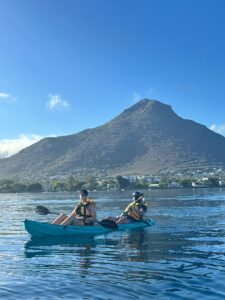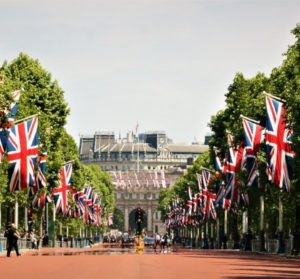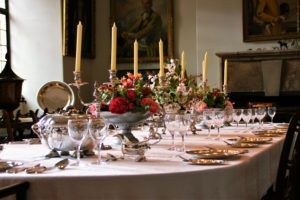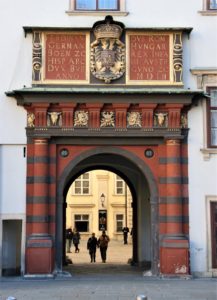If you have audio enabled you can listen to the content instead of reading it yourself…
Leaving behind the physical and fun activities, it was now time to vary our excursions to do some educational exploration. We could have been daring and hired a car to explore the island but in holiday/honeymoon mode we were content with using a local taxi man (Jay) to drive us around and take a more laid-back approach. Jay was a recommendation from a fellow guest (they having used him on a taxi journey) and worked out a lot cheaper than booking through an online company or our hotel. This is clear evidence of the value of meeting and talking with people and not always relying on the internet – as if evidence were needed!! The internet has its uses but social media has changed the way we communicate, and that not for the better. Face to face communication is a dying art and its future doesn’t look bright based on the teens and twenties we see. We booked two day trips with Jay and split these into a day meandering into the north of the island and a day meandering around the middle and southern part of the island. After a few exchanged WhatsApp messages (the internet has its uses!!), we agreed on some places to visit one of which was the Martello Tower Museum.



The first place I want to write about was the Martello tower. Our taxi was a smart Suzuki. Most cars we observed on our meanderings were modern and the roads on which we travelled were of good condition. We left the main road/highway before turning into the local housing, wondering where we might be headed. Jay was quick to point out a random sign saying that it was the right way. We parked up in what looked like a normal public car park – like we have back home. Directly in front of us was a mound and to the rear of us the tower. It was clear to see that the car park was ‘overseen’ by a short and stumpy tower. The addition of the car park meant that he local landscape was a lot different now compared to the time when the tower was built. We left the car immediately and made a beeline for the entrance to the Martello Tower. A little puzzled and amused at the need to rush in, all became clear. We quickly walked in and handed over the a pittance of an entry fee. The lady behind the counter, registered our visit before she went to the entrance and brought the prison cell like door shut and locked it up. Fearing an ambush/capture we were quickly put at ease when our driver (who accompanied us on the tour) explained that we were on a private tour and that we wouldn’t be disrupted as the door was locked. We quickly relaxed into the informative chat provided to us by our guide.
It is evident there has been some serious love, care and investment put into the restoration of this building. It shows an important past in the island’s history. Personally, I always find these places fascinating. I always try to visit anything that is British when on my meanderings. It was amazing to see how vast the British empire extended at its height. Was it not the largest empire known to man? A quarter of the world’s land area ‘belonged’ (there is a debate to be enjoyed about the use of this word!!) to the British back in 1913. Flights have made travel so much quicker and easier, but when the British captured these lands, it would have been some boat journey here.
When the British captured the island, they decided to build 5 Martello towers along the west coast in strategic locations near to river mouths as part of the coastal defence against a French invasion. At the time the French weren’t too happy with the British plans to abolish slavery. Building of the Martello Towers started in 1832 and were completed in just 3 years. This was just a couple of years before Queen Victoria came to the throne in 1837. The British based the Martello towers’ design on a tower they had been impressed with during a conflict against the French during a fierce battle at Mortella Bay, Corsica. The Brits were so impressed by these structures that they took them to all parts of the empire to aid its protection. The 5 Martello towers in Mauritius were never to see any military action.
Our guide was based on the current “entrance” level (I believe that this wasn’t the original entrance level). When we walked into the Martello Tower it was noticeable how thick the walls were. Some were 11 feet thick! The tower was built using basalt rock. Beneath this entrance level (which I will refer to as ground level), was a fascinating design. Underneath the floor we walked on was where the water was stored. Whether it was the Brits or an idea they had pinched, they managed to design a system that harvested the rainwater captured on the roof and then was stored beneath them. Our guide was quick to pull on a device which showed us the water still stowed beneath us through a glass viewing point. The entrance floor our guide was on would have housed the powder magazine. She showed us some of the ammunition types that would have been stored here on this level.



Our guide then took us up some stairs to the first floor, and as we entered it an impressive fan vault ceiling was seen. It was surprising to see this in a bright, white colour. This was the area where the soldiers would have lived and slept and where the original entrance was. The captain/general in charge had their own area constructed out of timber. This had been carefully restored to display a captain writing at his desk. Around the middle were several muskets and a cannon ball where you could try and guess the weight. My guess was hopelessly wrong. If you are ever there, take a close look at the ceiling as you can see the stalactites forming.



We left the digs (first floor) and made our way to the final floor, which was the roof. As we came out onto the roof of the Martello Tower, the original cannon was set up in place, and it had been lovingly restored. Our guide was able to explain how it gave the small garrison a 360-degree shot. It now resided pointing out to sea. In the distance was Morne Le Brabant. It certainly was a dreamy view for us (not surprising considering our walk up that famous mountain), but you could see the strategic view from back in the day. Standing there one could dream of a tall ship waiting in the bay to invade or bring supplies. Sadly, it was all rather peaceful.



This completed the end of our tour of Martello Tower. It was quick. I couldn’t fully listen partly due to the fact it was hard to understand everything that was said (there were some language barriers which made it hard to understand). Some online research was needed to help write this blog and assist with the education, however, we thoroughly enjoyed our visit to the tower and used the internet to compound what knowledge we acquired on the day!! We certainly learned a lot and would recommend it to anyone else who is visiting this wonderful island.









































 Now, I am not averse to entering a church, abbey or cathedral. I find them good places to calm down and contemplate life. Often, I am there alone with my thoughts but on this occasion (as was the case in July 2022 at St Paul’s cathedral) I was there with my father. He, like me, was bowled over by the fact that a timed entrance slot had to be pre-booked and further surprised to see so many people inside
Now, I am not averse to entering a church, abbey or cathedral. I find them good places to calm down and contemplate life. Often, I am there alone with my thoughts but on this occasion (as was the case in July 2022 at St Paul’s cathedral) I was there with my father. He, like me, was bowled over by the fact that a timed entrance slot had to be pre-booked and further surprised to see so many people inside  The building is very famous, strikingly beautiful and massively interesting. To me it was an intriguing and beguiling place. To us Brits there seems to be a lack of appreciation or willingness to visit such iconic places but to foreign tourists, there appears to be incredible levels of fascination. The ‘abbey’ is situated in the heart of central London, in the city of Westminster (some people refer to Westminster as one of its boroughs, however, I call it one of London’s two cities) and a short walk from the River Thames. It stands
The building is very famous, strikingly beautiful and massively interesting. To me it was an intriguing and beguiling place. To us Brits there seems to be a lack of appreciation or willingness to visit such iconic places but to foreign tourists, there appears to be incredible levels of fascination. The ‘abbey’ is situated in the heart of central London, in the city of Westminster (some people refer to Westminster as one of its boroughs, however, I call it one of London’s two cities) and a short walk from the River Thames. It stands Church, Abbey or Cathedral?
Church, Abbey or Cathedral? Royal Peculiar
Royal Peculiar Mausoleum?
Mausoleum? Henry VII Lady Chapel
Henry VII Lady Chapel Coronation Church
Coronation Church Gothic Masterpiece
Gothic Masterpiece






























































































































